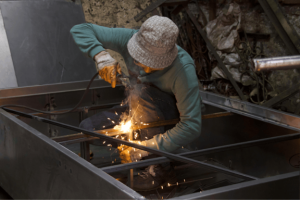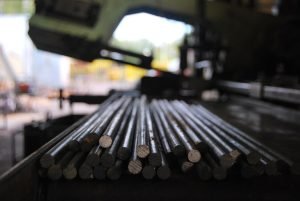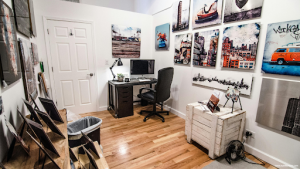Last Updated on April 23, 2025 by teamobn
A pallet wall DIY project. A wood feature wall is among those versatile details that look good just about anywhere. While a feature wall typically adds visual interest to a room, it is also a great way to add warmth and texture.
The best feature walls are made of natural materials, such as wood, stone, or brick. For example, reclaimed wood or a DIY Pallet wall can be a great alternative to stone, especially if you are working with a budget.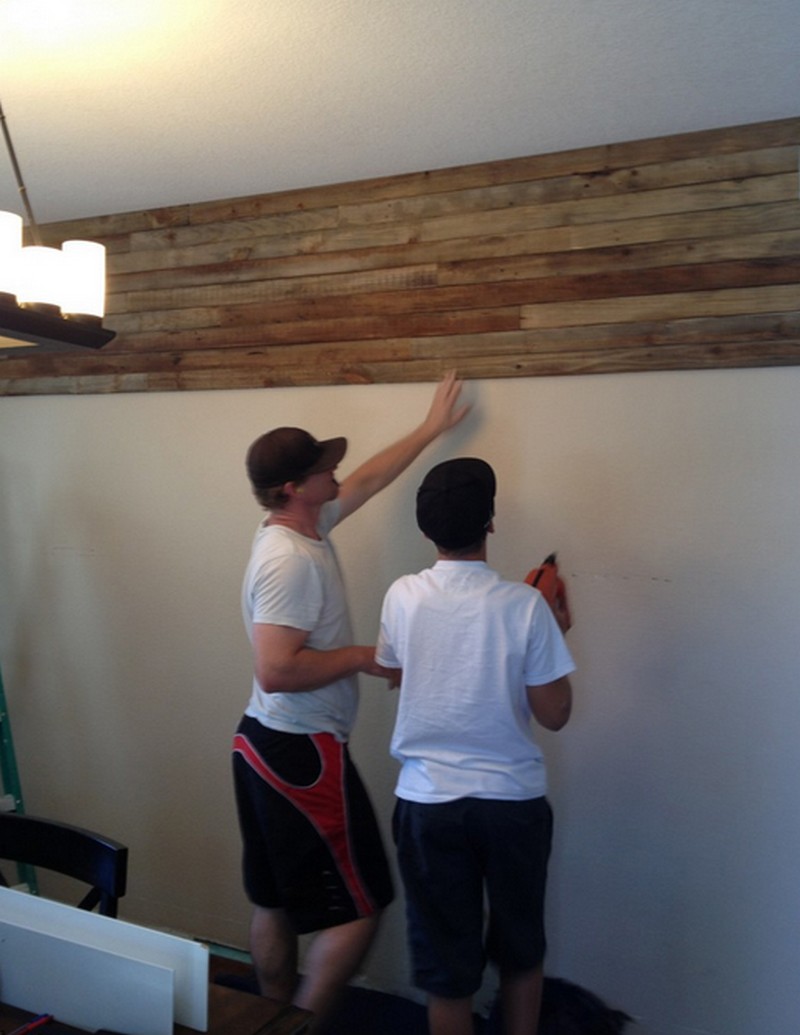
They exude a strong – but never overbearing – presence and add rustic sophistication to traditional interior design schemes. Rustic and industrial furniture styles are surging in popularity as more and more homeowners embrace the unapologetic beauty of a well-crafted, imperfect piece of wood.
But what about the upkeep? It’s not difficult to maintain the beauty of your favourite rustic pieces, especially the DIY pallet wall accent. A little polish and furniture wax, the occasional light sanding, and you’ll be set.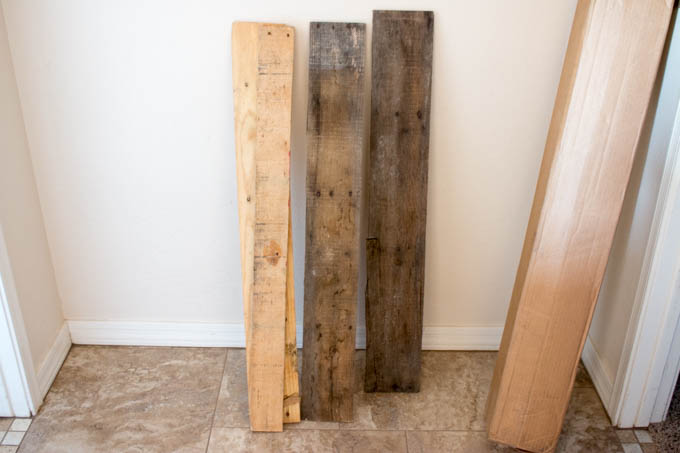
The natural patina of the wood is very calming whether it be on reclaimed, whitewashed, painted, or -yes – even wood pallets.
If you like the idea of creating a timber feature wall, why not make it out of recycled pallets? This DIY Pallet wall will give a significant accent to any of your rooms. If you’re going for a rustic, relaxed look in your living space, then this project could be for you.
This is a simple project that you should be able to complete in a weekend or two, as long as you have all the required materials, hardware, and tools. And if you’re a new DIYer, get some help from your experienced friends or relatives. Not only do you get an awesome wall, but you also learn new skills!
Like the idea of an inexpensive and easy-to-build timber feature wall? Then this project might be for you!
Building a Pallet Wall DIY Project
Materials:
- Pallets – enough to cover your wall
- Wood Stain – for a darker finish
- Paint – taupe or brown
- Box Extenders
- Screws
Tools:
- Reciprocating Saw
- Table Saw
- Nail Gun
- Screw Driver
Steps:
Step 1: Prepare the Pallets
Start by disassembling your pallets using a reciprocating saw to cut through the nails without splitting the wood. Once separated, sort the planks by width and tone if you want a more organized look or mix them for a varied, reclaimed style.
Step 2: Cut the Pallet Boards to Size
Measure the wall where you’ll be installing the pallet boards. Use a table saw to trim the planks as needed. Make sure the ends are square and consistent to ensure a tight, clean fit when installed.
Step 3: Sand the Wood
Lightly sand each board to remove splinters and dirt. Focus on smoothing out the surface without erasing the natural patina of the wood. This will help the stain or paint adhere better and prevent injuries during installation.
Step 4: Stain or Paint the Boards
Apply wood stain if you want a rich, dark finish that enhances the wood grain. Alternatively, use taupe or brown paint for a more contemporary or uniform look. Let everything dry thoroughly before moving on to the next step.
Step 5: Prepare the Wall
Make sure the wall surface is clean and dry. If there are outlets, remove the covers and install box extenders to bring the outlets flush with the pallet wall. Find the wall studs using a stud finder so you can securely attach the planks.
Step 6: Start Installing the Boards
Begin at the bottom corner of your wall. Place the first row of pallet boards using a level to make sure they are straight. Use a nail gun to fasten the boards into the wall studs. For added hold, drive screws in with a screw driver or drill. Continue layering upward, staggering the joints for a natural, plank-style look.
Step 7: Trim and Finish
Once the wall is fully covered, use a table saw to cut and fit any last pieces near the ceiling or corners. Touch up any spots with extra stain or paint if needed. Reinstall outlet covers over the box extenders for a finished appearance.
Step 8: Clean Up and Style the Space
Wipe down the wall to remove dust. Step back and admire your new feature wall. Add wall-mounted lights or minimalist decor to highlight the texture and color of your pallet wall.
Creative Layout Patterns for Your Pallet Wall
A pallet wall DIY project doesn’t have to follow a basic horizontal layout. One of the best parts about working with pallet wood is the freedom to experiment with visual patterns. The way you arrange your boards can completely transform the feel of a room—whether you’re going for subtle charm or bold design. Below are some creative layout ideas that can take your pallet wall DIY project to the next level.
Classic Horizontal Layout
This is the most common pattern for a pallet wall and for good reason. It’s simple, clean, and brings a rustic warmth that complements almost any decor style. Boards are placed in rows, one on top of the other, either staggered like bricks or aligned edge to edge. This layout is ideal if your goal is to create a cozy, understated backdrop.
Vertical Plank Layout
Placing pallet boards vertically can make your walls appear taller, adding height and a sleek, unexpected twist to traditional wood paneling. This works well in narrow spaces like entryways or hallways. It’s also a great choice for a more contemporary take on the pallet wall DIY project.
Chevron and Herringbone Patterns
If you want your pallet wall to stand out, consider a chevron or herringbone design. These angled layouts require more precision and cutting, but the payoff is huge in terms of visual impact. A chevron pattern forms a repeating “V” shape, while herringbone mimics a zigzag. Both are elegant options that can add sophistication to a rustic material.
Random Patchwork Style
This pattern uses pallet boards of different lengths, widths, and tones, arranged in no particular order. The result is a casual, artistic look that adds depth and texture. It’s ideal for a bohemian or eclectic interior and gives you the freedom to use up odd-sized boards without much waste.
Framed Inlay
In this layout, a border is created around a central section of boards laid in a different direction or style. For example, you might frame a herringbone center with horizontally placed planks. This style adds structure and drama to the pallet wall, making it feel more like a statement piece than a backdrop.
Choosing the right pattern for your pallet wall DIY project depends on the room, your design goals, and how much time you want to spend on cutting and fitting boards. No matter which layout you go with, the finished wall will bring texture, style, and a custom feel to your space.
How to Choose the Right Pallet Wood for Indoor Use
Not all pallet wood is created equal, especially when it comes to indoor projects. When building a pallet wall DIY project, choosing the right type of wood isn’t just about looks—it’s about safety, durability, and ease of installation. Before you start cutting and staining, take time to select pallets that are safe and suited for the indoor environment.
Look for Heat-Treated Stamps
The first thing to check on a pallet is how it was treated. Look for the “HT” stamp, which stands for heat-treated. This means the wood was treated with heat instead of chemicals, making it safe for indoor use. Avoid pallets marked “MB”—that indicates methyl bromide, a toxic pesticide not suitable for home projects. A safe pallet is the foundation of any good pallet wall DIY project.
Avoid Damaged or Moldy Wood
Inspect the condition of each pallet before bringing it inside. Cracks, heavy splinters, stains, or visible mold are all red flags. These imperfections aren’t just cosmetic—they can affect the structural integrity of your wall and pose health risks. Choose boards that are solid, dry, and free from discoloration.
Mind the Origin and Purpose
Pallets used for food, chemicals, or industrial parts might carry residues or contaminants. If you can trace the origin of your pallets—say, from a local grocery store or furniture shop—you’ll have a better idea of what they carried. Choose pallets with a known, clean history for indoor projects, especially in living spaces.
Stick with Hardwood When Possible
While many pallets are made of softwood like pine, some are constructed from oak or maple. These hardwoods are more durable and will stand up better over time, especially in high-traffic areas. They’re also less likely to warp, which helps keep your pallet wall DIY project looking great for years.
Clean and Sand Thoroughly
Even the best pallets need prep. Use a stiff brush to remove dirt and debris. Then give the boards a thorough sanding to eliminate splinters and prepare the surface for paint or stain. Prepping your wood properly ensures a smoother finish and helps your project come together more professionally.
Selecting the right pallet wood is the first real step in any pallet wall DIY project. By choosing clean, heat-treated boards in good condition, you’re setting yourself up for a safer, longer-lasting, and better-looking result.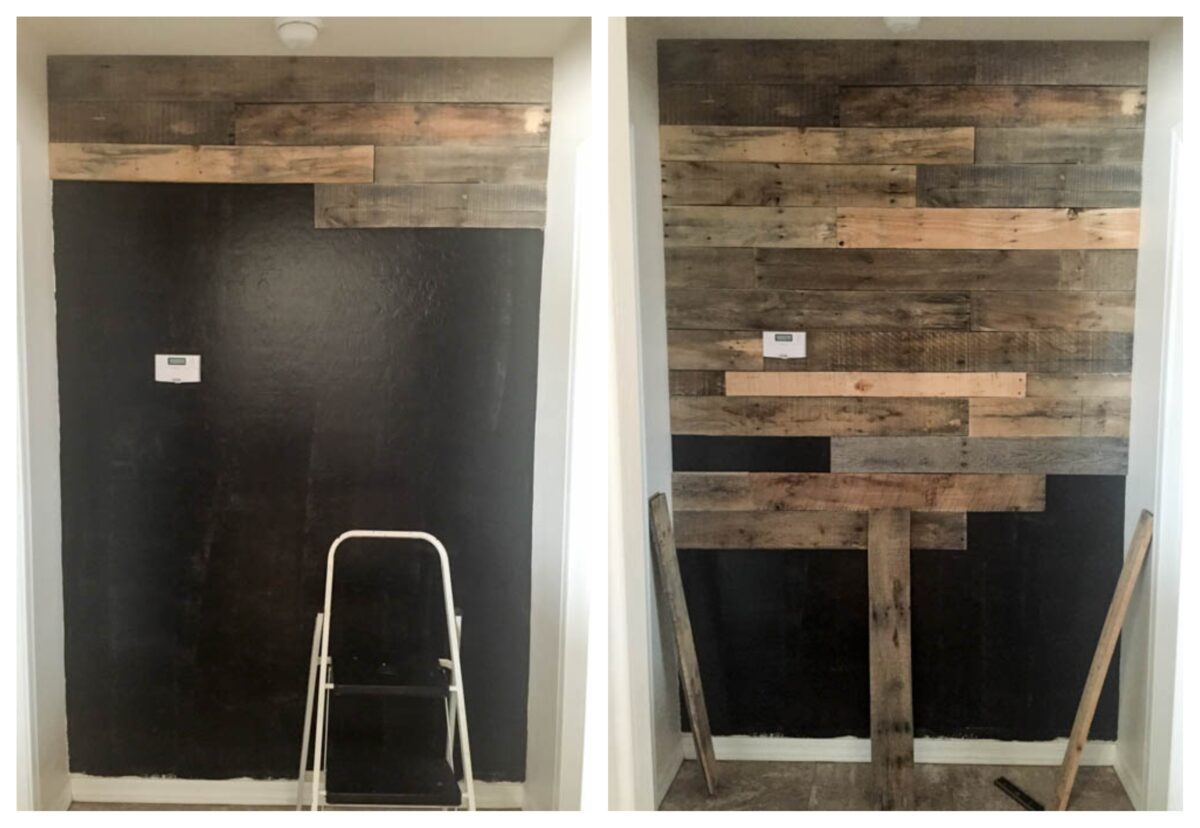
Incorporating Lighting Into Your Pallet Wall
Adding lighting to your pallet wall DIY project takes the design from basic to brilliant. It highlights the texture of the wood, adds depth to the room, and can even serve as a soft, ambient light source. Whether you’re creating a cozy living room backdrop or a standout headboard wall, integrating lighting can turn a simple wall into a stunning focal point.
Use LED Strip Lights Behind the Boards
Installing LED strips behind your pallet boards creates a subtle backlit glow that enhances the natural grain and texture. Choose warm white tones for a cozy feel or color-changing strips for a more modern look. This type of lighting is energy-efficient and can easily be hidden, making it a great option for any pallet wall DIY project.
Add Recessed Lighting or Spotlights
For a more dramatic effect, install recessed lighting above or below the pallet wall. This works especially well if you want to showcase art, plants, or shelving placed in front of the wall. The light will bounce off the uneven surface of the pallet wood, creating shadows and highlights that add visual interest.
Install Sconce or Industrial Wall Lights
Mounting sconces directly on the pallet wall brings both function and charm. Choose fixtures that match the overall theme—industrial metal for a loft feel, vintage bulbs for rustic charm, or minimalist designs for a clean, modern touch. These can serve as reading lights, accent lighting, or even primary lighting depending on your setup.
Create Integrated Shelving with Built-In Lights
Combine shelves with small integrated lights to create a functional display area. It’s perfect for books, small décor, or even a mini indoor plant display. Embedding puck lights or small LED fixtures in the shelving gives your pallet wall DIY project a multi-use design element without cluttering the space.
Highlight Natural Wood Tones with Accent Lighting
Pallet wood varies in color and texture, and the right lighting can bring out those natural tones beautifully. Position accent lights at angles to enhance the warm hues and grain patterns. The contrast between light and shadow will make the wall more dynamic and visually appealing.
Lighting doesn’t just make your pallet wall look better—it adds personality and purpose. A well-lit pallet wall DIY project can elevate the entire room, blending style with function in a way that feels custom and complete.
Conclusion
A pallet wall DIY project adds character, warmth, and rustic charm to any room. With the right materials and layout, it becomes a standout feature in your home. Take your time with prep and installation to create a finished wooden wall feature that’s both durable and beautiful.

